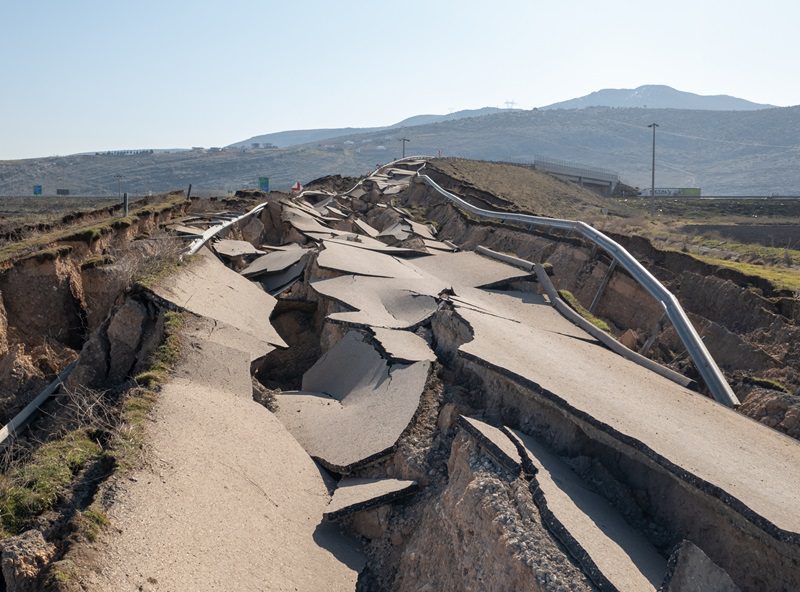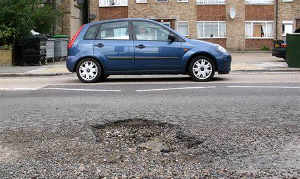What brokers are suggesting to lower quake deductibles

High deductibles attached to B.C. earthquake insurance coverage are at the point now where brokers are seeking alternative ways to bring the deductibles down for their consumers.
One idea floated at the Insurance Brokers Association of B.C.’s 2024 AGM and Leader’s Conference Thursday is to strip the cost of a home’s contents out of the quake product.
“For me, the vision I have is we need to not pay for cosmetic damage to property,” IBABC executive director Chuck Byrne proposed at a panel discussion concluding the conference.
“That’s the original idea with the deductible. Small losses shouldn’t be covered because it’s just a cost to the system. Cosmetic damage to a residence or commercial building, that’s your property, you fix it over time. But if you can live in the home, that’s the key. What does it take to get back to living in the home?
“Perhaps we only insure the big-ticket product against the habitational aspect of getting back into the home and we don’t pay for the small stuff. And that means the [amount] of the deductible is going to change. You don’t have the big deductible. You have [quake] coverage that only applies if [the home is] inhabitable…If it’s uninhabitable, that’s when the real product kicks in.”
Julie Skelton of HUB International, who will succeed Byrne as IBABC’s executive director when he retires on Dec. 31, 2024, elaborated on his idea. By including 80% of contents coverage within the quake product, she said by way of example, insurers would need to purchase more reinsurance to cover that sum.
“If you’re putting that [contents coverage] into the reinsurance bucket, do we pull that out, as an industry, and start thinking differently around that?” she said.
One broker at the conference noted insurers currently have various ways of covering contents in their quake policies. Some offer to cover a percentage of contents — such as insuring 25%, 50%, 75%, or 100% of a home’s contents for quake coverage. Other insurers take an all-or-nothing approach to covering contents — either 0% or 100%.
Also in the news: 90% of wildfire losses are preventable. How brokers can help.
Alister Campbell, president and CEO of the Property and Casualty Insurance Compensation Corporation (PACICC), was the luncheon keynote speaker at the IBABC conference. He has been championing the earthquake insurance file for several years. As a backdrop to the quake reinsurance discussions at the IBABC conference, Campbell’s presentation outlines multiple financial stressors now facing insurers, including the high cost of reinsurance.
Canadian property and casualty insurers paid for $36.5 billion worth of reinsurance this year, as opposed to $17.6 billion for reinsurance in 2013, Campbell noted. This is due to the increased exposure of property and casualty insurers to NatCat risks in Canada over the past decade — and that’s without “The Big One” (a major earthquake) shaking the West Coast.
Campbell added the current rate-on-line [ROL] cost for buying reinsurance now starts at 100% and ends at 200%. ROL is a percentage calculation derived from dividing reinsurance premium by reinsurance limit. For example, spending $2 million in premium for $10 million in catastrophe cover would be a ROL of 20%.
“So, they’re buying twice as much and paying twice as much [for reinsurance],” Campbell said of the primary P&C insurers. “And that has awful consequences if they can’t pass all of the rate through to the clients. And that’s why you’re feeling all of the pain with the renewals you’re sending them.”
Various statistics suggest the average price of a home in Vancouver is now $1.2 million. A 20% quake deductible would mean the homeowner would be on the hook for covering the first $240,000 of quake damage.
“It’s worrisome,” said Campbell. “Highly mortgaged British Columbians, a 20% quake deductible — how’s that going to work?”
High quake deductibles aren’t the only issue with the quake product.
“And then there are exclusions,” Campbell said of events related to the aftermath of a quake. “Tsunami excluded., liquefaction excluded. There’s a whole bunch of things that will happen that won’t be insured.”
Graham Haigh, senior vice president and chief operating officer of the Western region at Wawanesa Insurance, said the earthquake deductible issue spoke to the urgent need for a federal government quake backstop.
“It doesn’t do us any good to drop deductibles, make the coverage richer, if companies go out of business trying to fulfill that commitment that they’re making [to homeowners] that they can’t revoke,” he said. “And this speaks to having a government backstop…
“We’ve talked about [the reinsurance required for covering] a 1-in-500-year [earthquake] event. If we move that down to a one-in-250-year event for which we’re required to buy for damage beyond the [government] backstop, the deductibles come way down, and so does the cost of coverage.
“So, it does actually make a pretty significant difference by having a government backstop.”
Feature image courtesy of istock.com/yasharu




